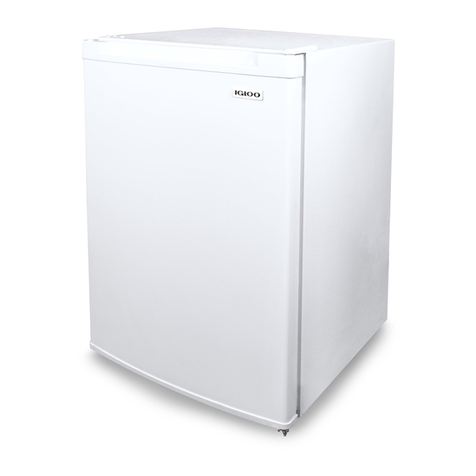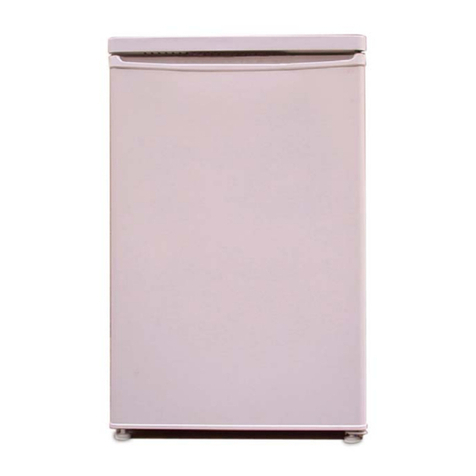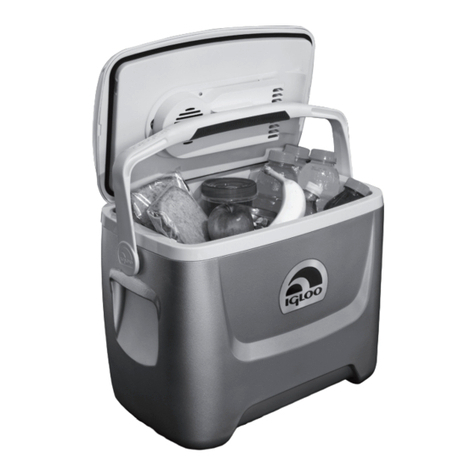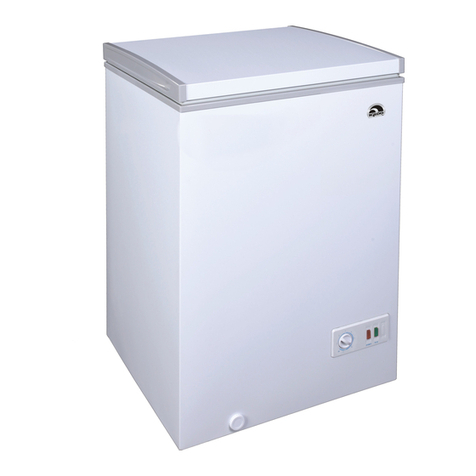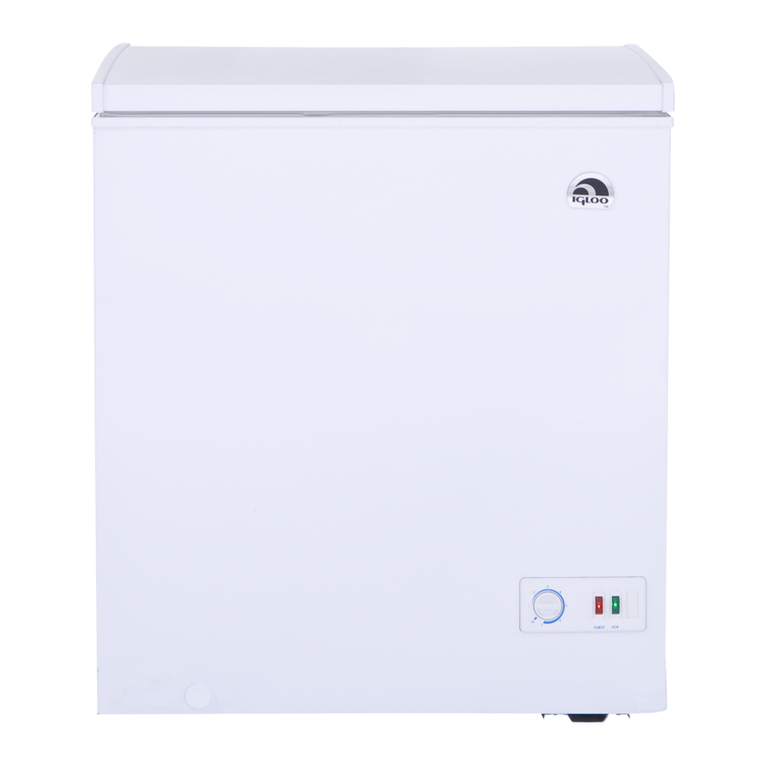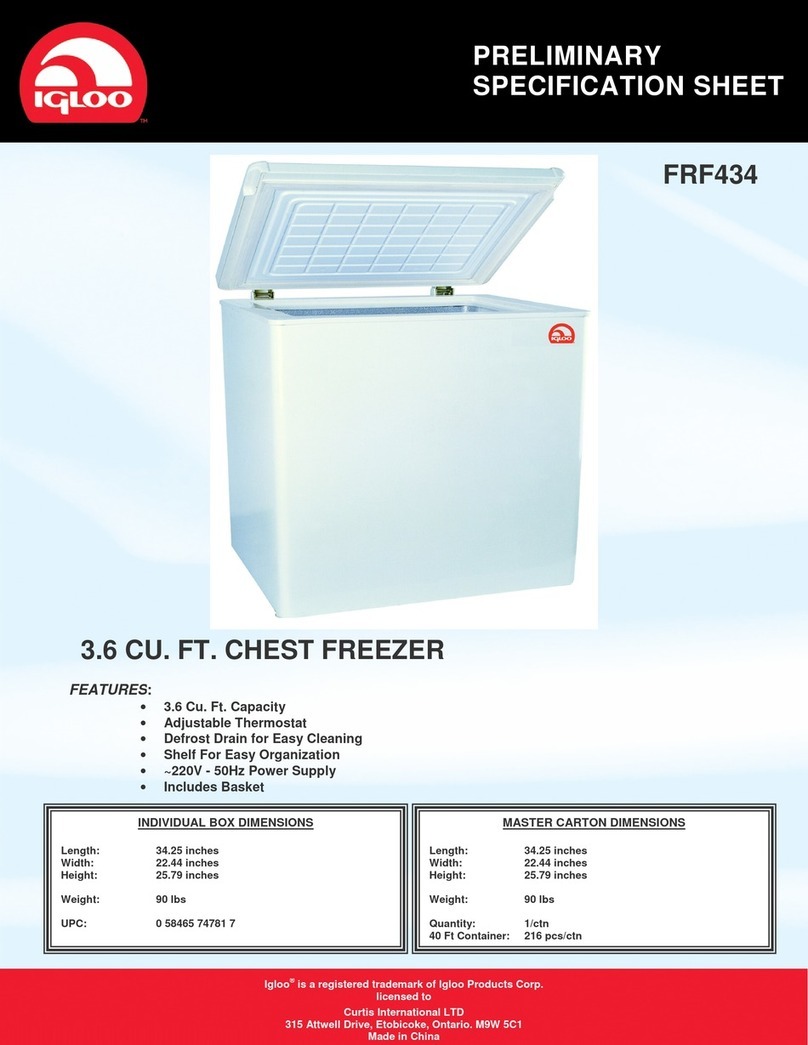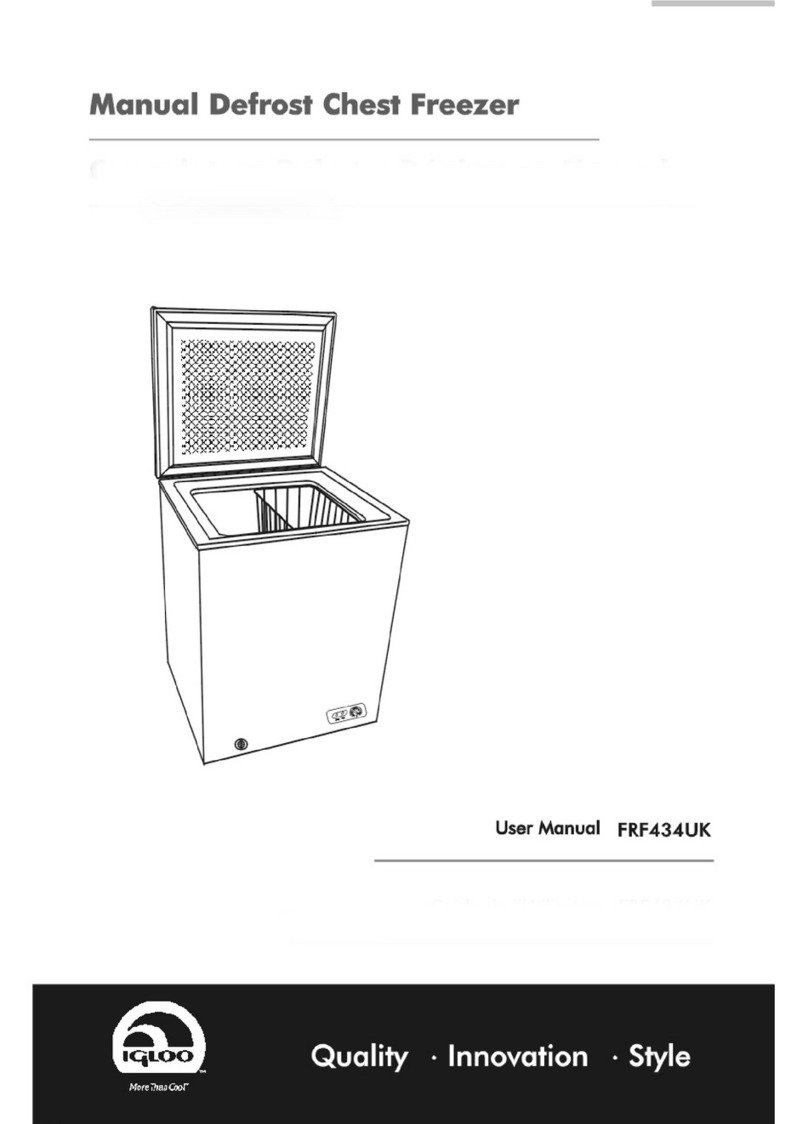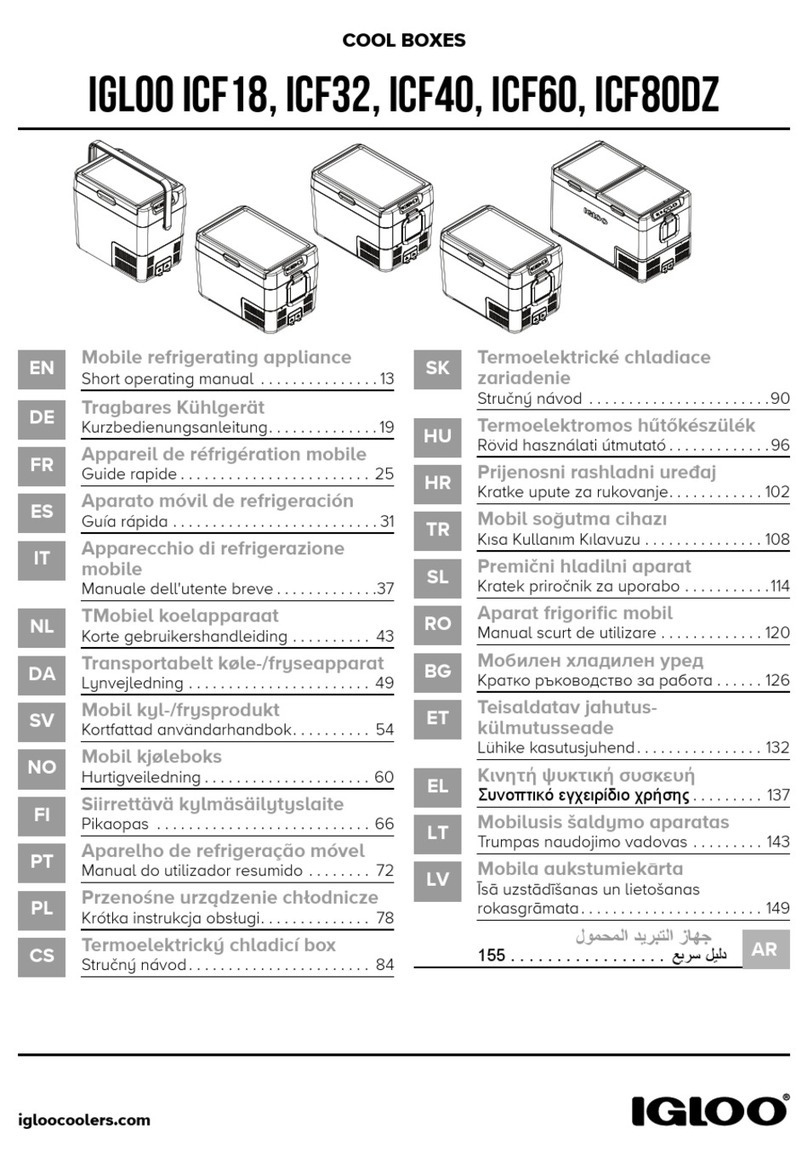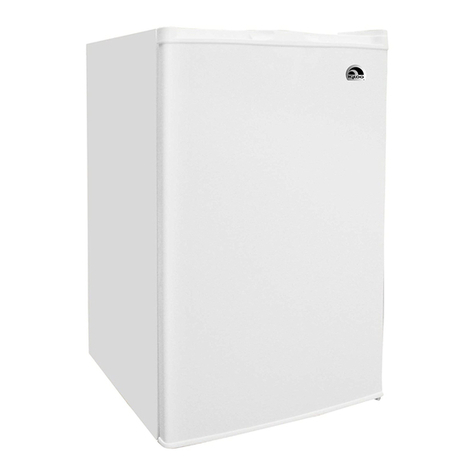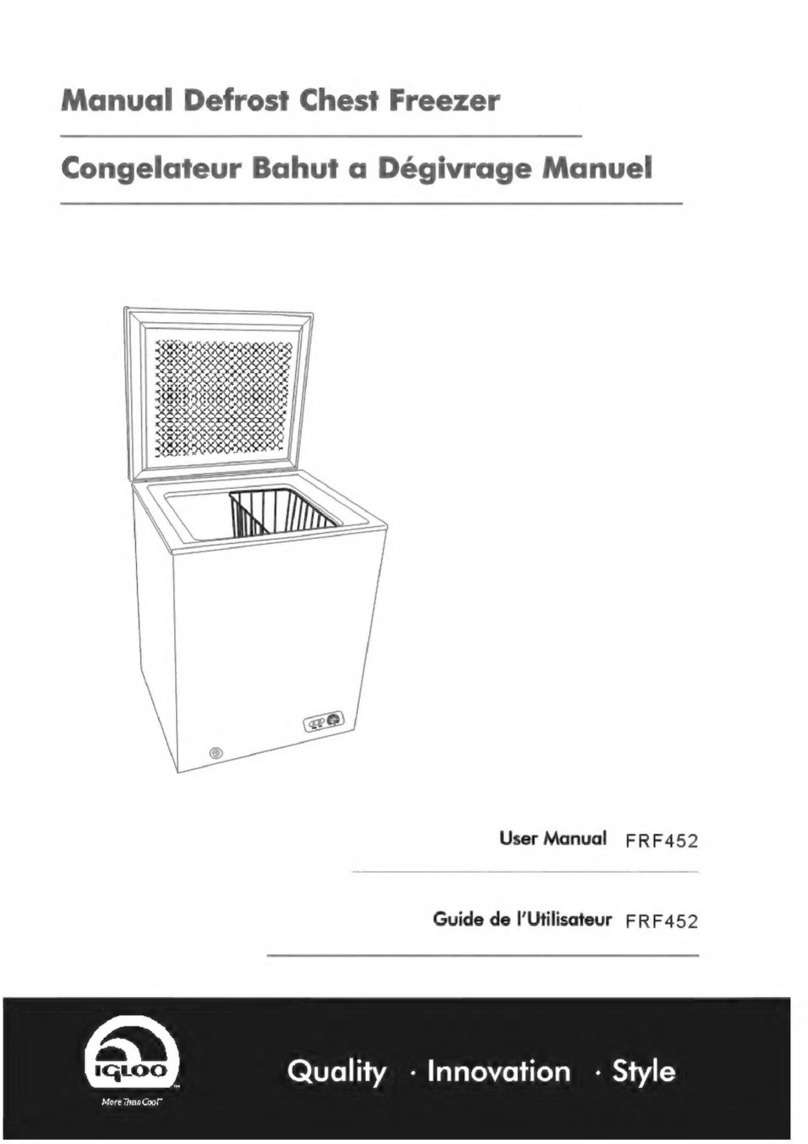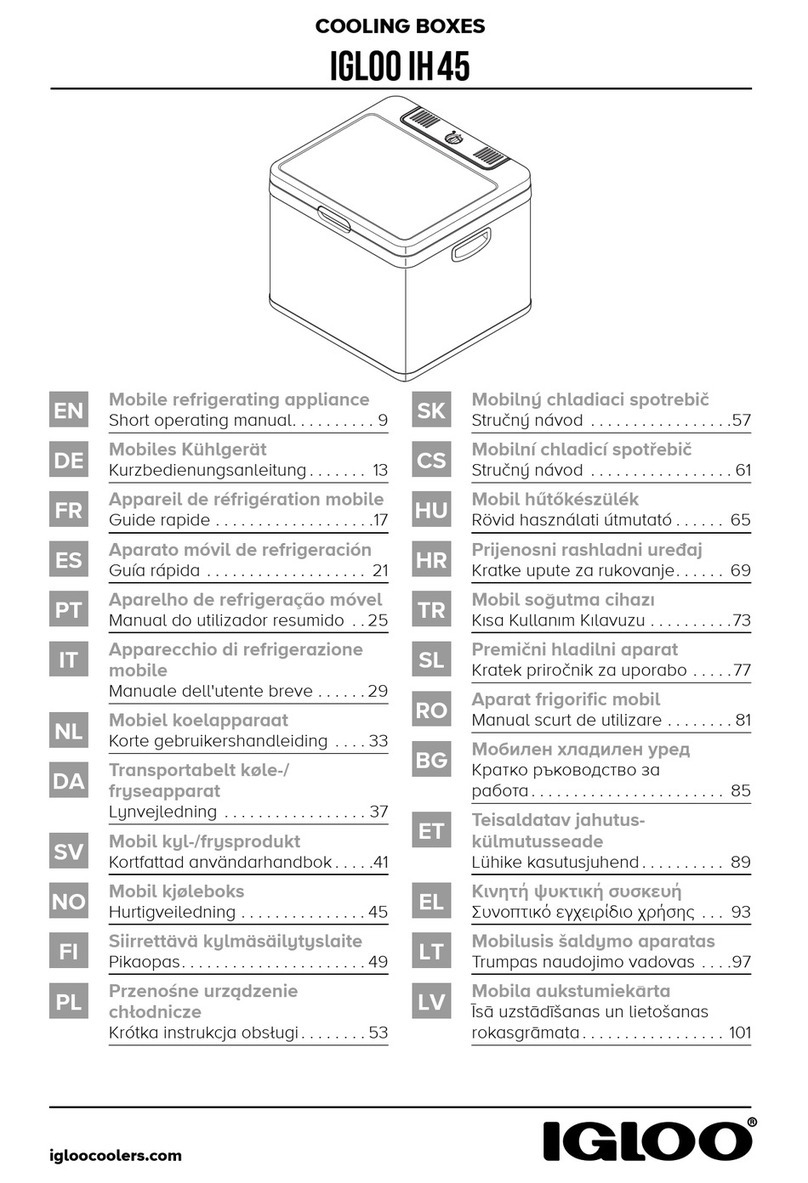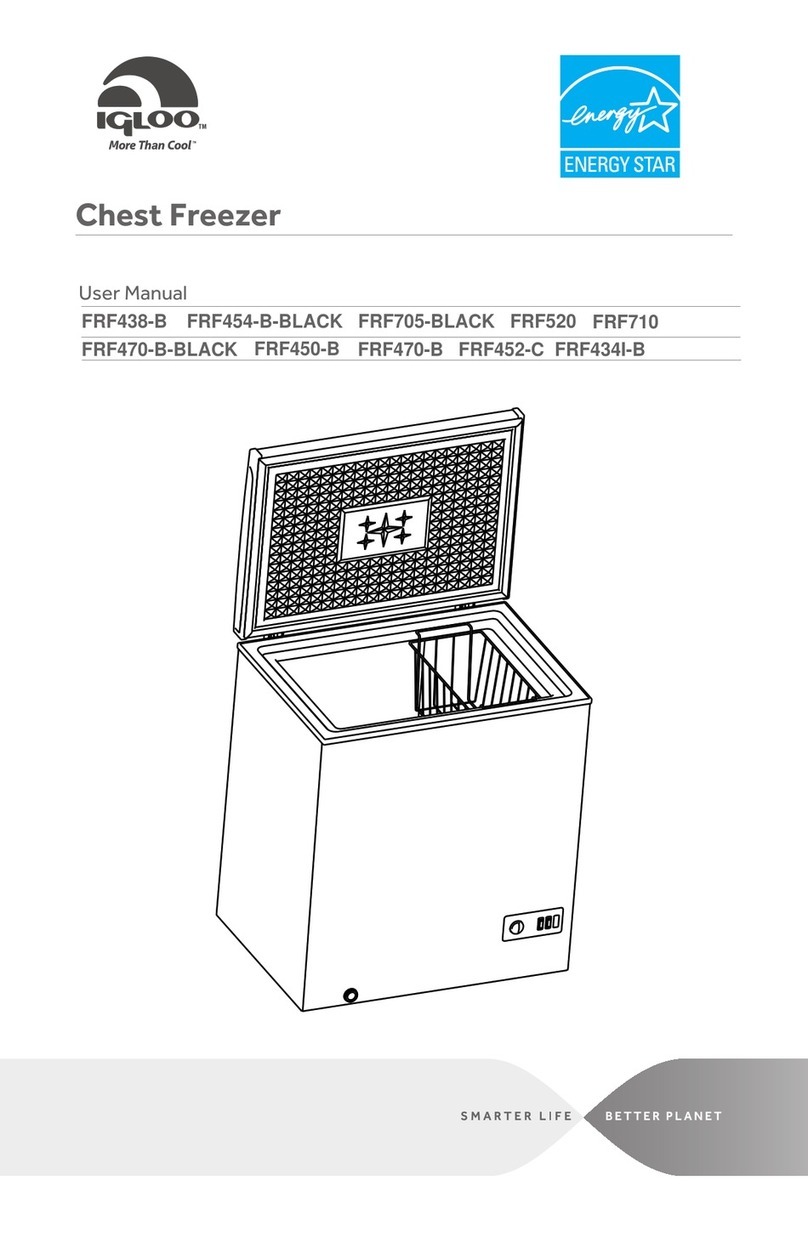
6
pl
Instrukcja obsługi Elba www.igloo.pl
6. SERWIS
6.1. Identyfikacja i naprawa usterek
W przypadku wystąpienia jakichkolwiek trudności podczas uruchamiania urządzenia lub podczas jego eksploatacji należy
powrócićdo tych rozdziałów instrukcji obsługi, które wyjaśniająwykonywanąoperacje. Ma to na celu upewnienie się, czy
urządzenie jest prawidłowo obsługiwane. Jeżeli trudności występująnadal, poniższe wskazówki pomogąw ich usunięciu.
Urządzenie nie pracuje...- Upewnićsię, czy:
• Urządzenie jest podłączone do sieci prądu elektrycznego
• Napięcie i częstotliwość w sieci sąodpowiednie z tymi, jakie zaleca producent (patrz tabliczka znamionowa)
• Włączony jest wyłącznik główny
• Termostat jest załączony (Dotyczy term. Igloo – Jeśli na wyświetlaczu wyświetlająsięjedynie dwie kropki – włącz termostat)
Urządzenie pracuje, oświetlenie nie świeci...- Upewnićsię, czy:
• Wyłącznik oświetlenia jest w pozycji załączonej
• Świetlówka lub zapłonnik w urządzeniu nie uległy spaleniu
Urządzenie nie osiąga odpowiedniej temperatury, oświetlenie świeci...-Upewnićsię, czy:
• Wyłącznik główny jest w pozycji załączonej
• Nastawa temperatury na termostacie jest odpowiednio ustawiona
• Termostat działa poprawnie
• Skraplacz nie jest zanieczyszczony, w razie potrzeby wyczyścić
• Temperatura otoczenia nie jest wyższa niż25ºC. Producent w tych temperaturach nie gwarantuje odpowiednich temperatur
• Minęło wystarczająco dużo czasu dla schłodzenia produktów
• W szafie nie umieszczono zbyt wiele świeżej żywności i nie przekroczono maksymalnej zdolności zamrażania
• Drzwiczki urządzenia zamykająsięwłaściwie i czy uszczelka przylega do korpusu urządzenia
• Otwory wentylacyjne urządzenia nie sązablokowane
(Dotyczy term. „IGLOO”) Termostat wyświetla C0 lub C1 lub C2 zamiast temperatury:
Sytuacja taka ma miejsce, jeżeli zostałuszkodzony jeden z czujników regulatora wówczas mogąpojawićsięnastępujące
komunikaty:
• C0 –uszkodzenie czujnika temperatury wewnątrz komory –wezwaćautoryzowany serwis
• C1 –uszkodzenie czujnika parownika - wezwaćautoryzowany serwis
• C2 –uszkodzenie czujnika alarmu skraplacza (lub uszkodzenie drugiego czujnika parownika)
– wezwaćautoryzowany serwis
(Dotyczy term. „IGLOO”) Urządzenie pracuje, włączona sygnalizacja dźwiękowa...- Upewnićsię, czy
• Skraplacz nie jest zanieczyszczony, w razie potrzeby wyczyścić
• Pracuje wentylator skraplacza
• Temperatura otoczenia nie przekracza 25ºC
Urządzenie pracuje zbyt głośno...- Upewnićsię, czy
• Urządzenie stoi stabilnie i czy jest prawidłowo wypoziomowane
• Przylegające do urządzenia meble nie drgająpodczas pracy sprężarki
• Elementy wewnętrzne zostały prawidłowo założone
Osadzanie siępary wodnej na szybach urządzenia przy dużej wilgotności względnej powietrza
powyżej 60% jest zjawiskiem naturalnym i nie wymaga wzywania serwisu!
Odgłosy wydawane przez urządzenia pracujące sązjawiskiem normalnym. W urządzeniach znajdująsię
wentylatory, silniki i sprężarki, które włączająsięi wyłączająautomatycznie. Każda sprężarka wytwarza
pewien hałas podczas pracy. Dźwięki te wytwarzane sąprzez silnik agregatu oraz przez czynnik
chłodniczy przepływający w obwodzie. Zjawisko to jest cechątechnicznąurządzeńchłodniczych
i nie oznacza ich wadliwej pracy.
Elementy urządzenia mogąkorodowaćprzy niewłaściwym użytkowaniu i konserwacji.
Należy przestrzegaćzasad:
• Nie dopuszczaćdo kontaktu powierzchni urządzenia z środkami zawierającymi chlor i/lub sodę
w różnych odmianach, które niszcząich warstwęochronnąi elementy składowe urządzenia
(dotyczy równieżróżnych gatunków stali nierdzewnej)
